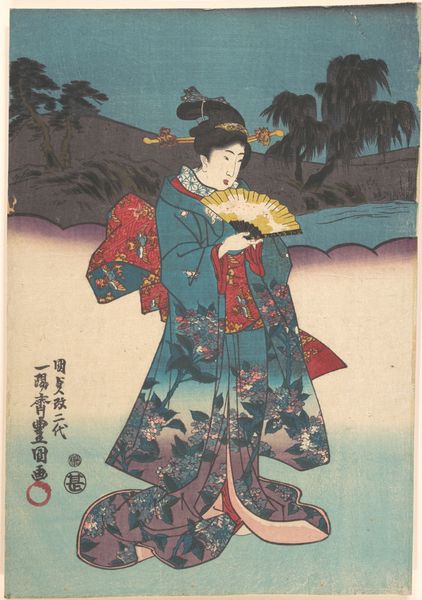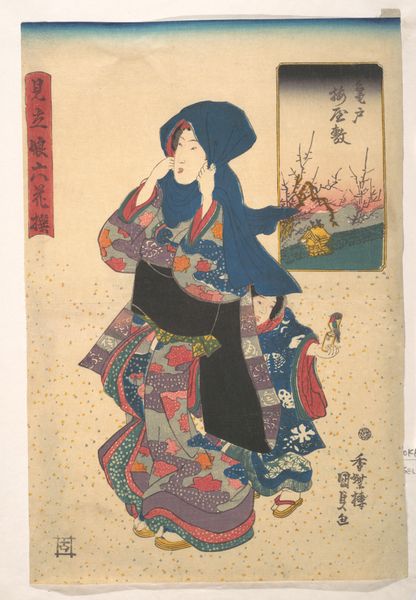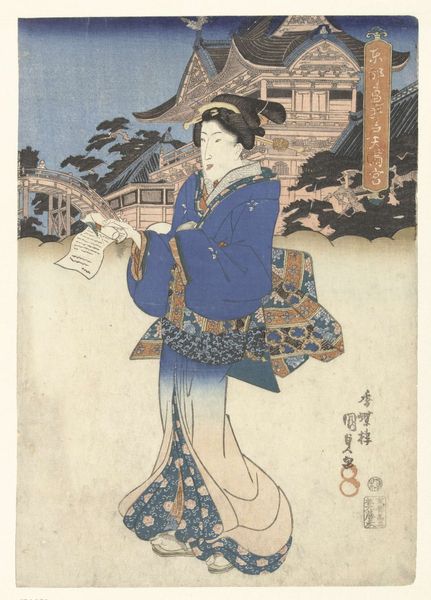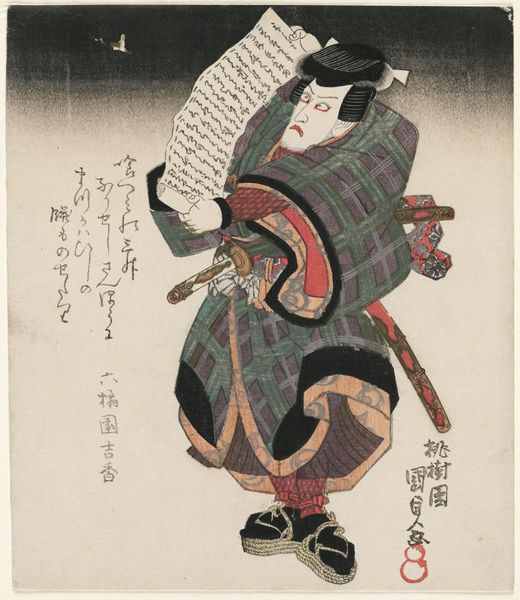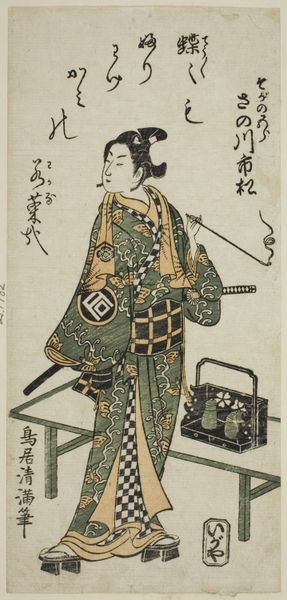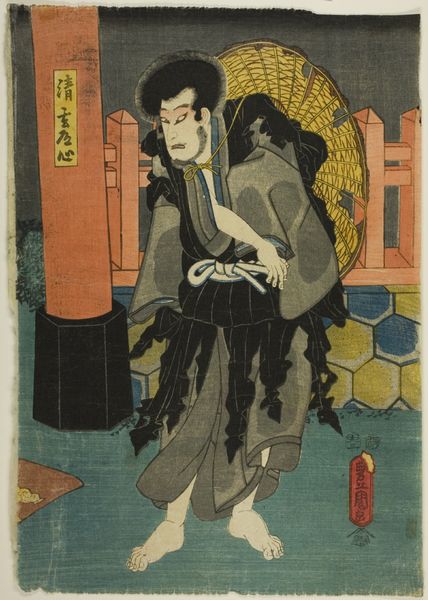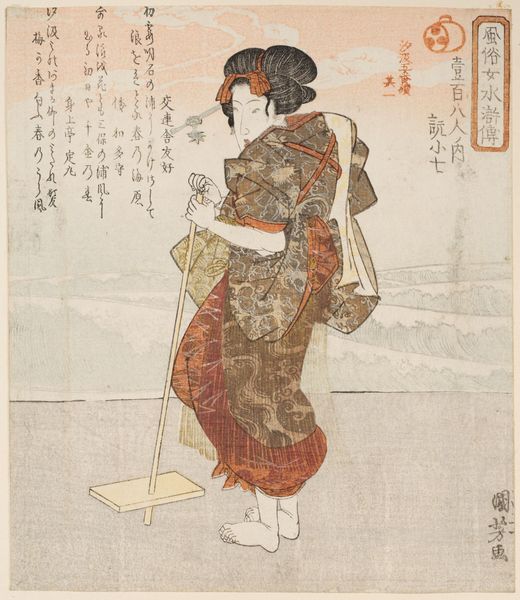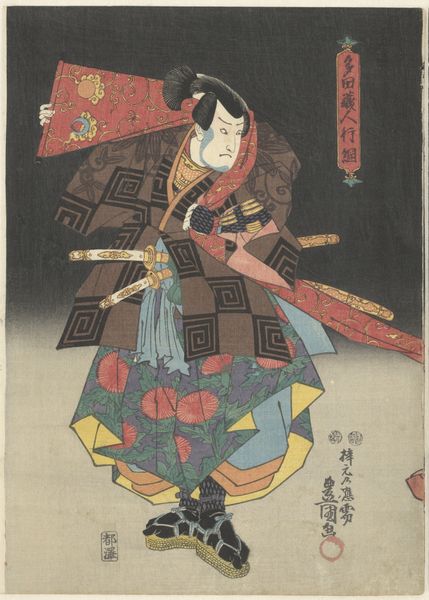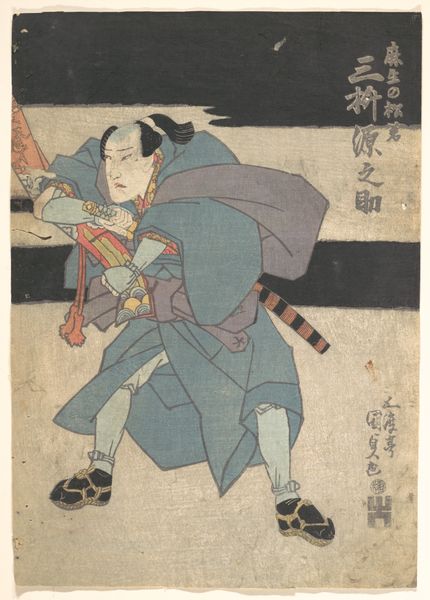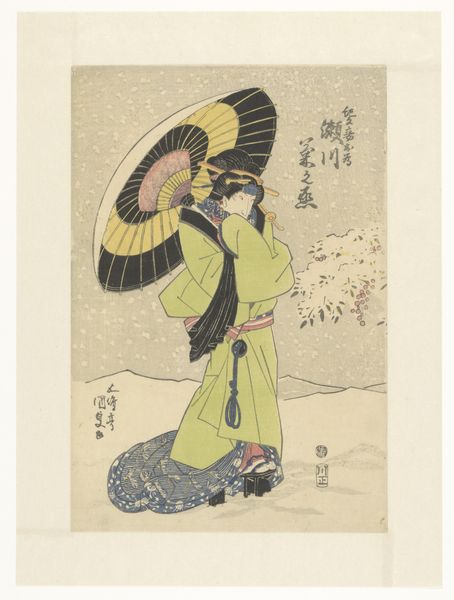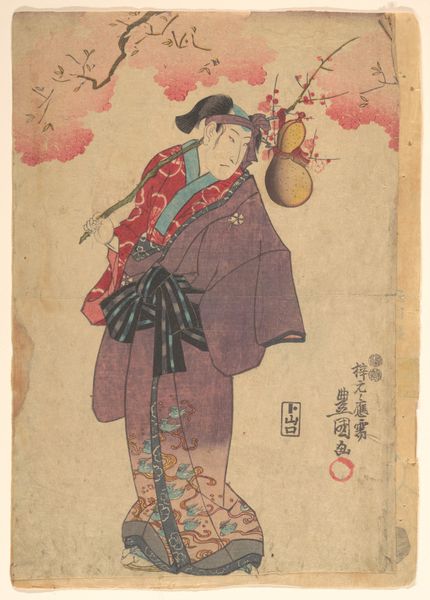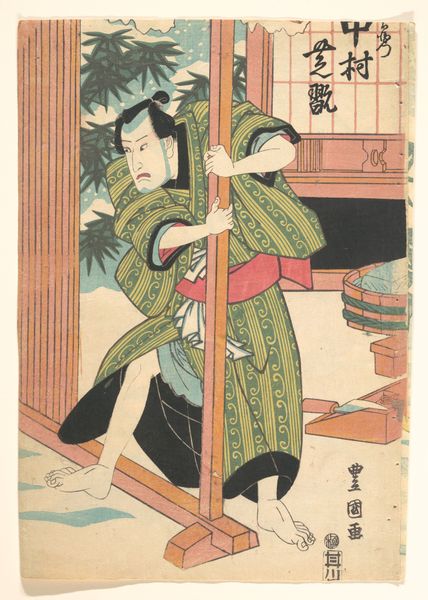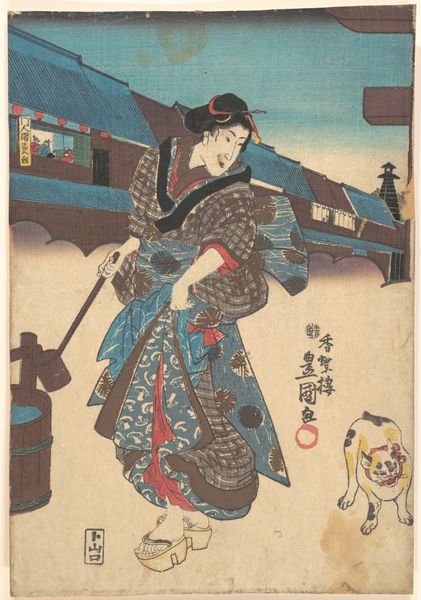
print, woodblock-print
# print
#
asian-art
#
ukiyo-e
#
woodblock-print
#
men
Dimensions: Image: 14 1/16 × 9 3/4 in. (35.7 × 24.8 cm)
Copyright: Public Domain
Curator: The work before us is a print from the mid-19th century, created by Utagawa Kunisada. This woodblock print, a wonderful example of ukiyo-e, is held here at the Metropolitan Museum of Art. Editor: My first impression is the weight of it, both literally and figuratively. The figure burdened by the box and the cold, muted palette suggest a heavy responsibility or journey. You feel the strain, don't you? Curator: Absolutely. It's remarkable how Kunisada captures the human form under duress through this composition. He's carrying this heavy package that looks very delicate but is probably just a symbol of labor and struggle in general. The man looks very calm. Editor: Speaking of composition, the diagonal lines formed by the figure and building really propel the eye upward and create a sense of dynamic movement despite the implied weight. Look at how the architecture and landscape define how hard the man's life must have been back then! Curator: The colors play a significant role here too. The green and blue of his garments could signify prosperity or hope in times of great oppression during the Tokugawa and Edo periods. Editor: I can also examine that the physical layering involved with creating ukiyo-e would suggest there were dozens of individual stations and tasks required to produce one woodblock print. So many layers for something that almost seems simple, right? Curator: A wonderful point. He stands as an archetypal figure of the worker and bearer. We are also able to imagine he could have had children or family to support too. A representation of stoic masculinity. Editor: Indeed, reflecting on this print underscores for me how crucial it is to remember the process behind artistic creations. The choice of print medium makes the labor that goes into artmaking and labor under social constraints equally important here. Curator: Seeing this print allows us to reflect upon and gain cultural insight into values such as duty, resilience, or even class in late Edo-period Japan, when social roles were highly emphasized in Ukiyo-e work. Editor: It's a great reminder that the stories behind materials, making, and markets shape meaning just as vividly as any symbolic figure might.
Comments
No comments
Be the first to comment and join the conversation on the ultimate creative platform.
